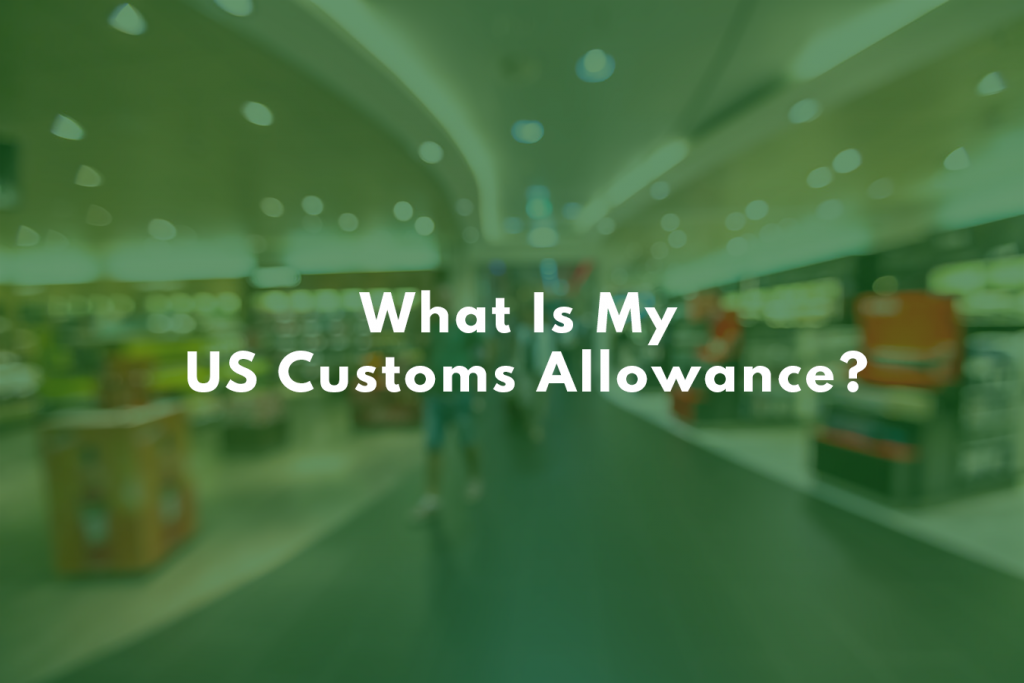You’ve been away on a vacation, and now you’re returning to the United States with goods and gifts. Depending on just how much you’re planning to bring back, the impending duty could be pretty steep… but it shouldn’t be a big deal, because you were out of the country for more than a day… right?
The US duty-free allowance isn’t a fixed rate for everyone in every circumstance, so sometimes trying to keep track of your allowance can feel like a guessing game. The country you’re coming from, how long you were away, what you bought or were given, and the price paid for them all play a role in determining whether or not you’re eligible for an exemption, as well as how much it will be.
What is my US Customs Allowance?
Your duty-free exemption allows you to bring goods back to the United States without paying the relevant duty that would have otherwise applied. Going over your US customs limits doesn’t mean your goods will be seized; you just have to pay duty on anything over. Exemptions don’t kick in for anyone until you’ve been out of the country for at least 48 hours.
As a US resident, you’ll generally have an $800 exemption, though this figure isn’t universal. If you’re returning from the US Virgin Islands or Guam, you’ll have a $1600 personal exemption instead.
According to Customs and Border Protection (CBP), the 48-hour+ duty-free exemptions apply when:
- The goods you’re bringing back to the United States are intended for personal and/or household use or will be given to others as gifts;
- The goods you’re bringing back are in your possession as you’re entering the United States; and
- You have been out of the country for more than 48 hours.
US residents are eligible for a $200 duty-free exemption if they’ve been out of the country for under 48 hours, provided they country they were visiting was any other than Mexico.
If you are a non-resident, your exemption is much smaller and more restricted. You have a duty-free exemption of $100 if you’re visiting the United States for 72 hours or more.
Make sure you declare everything. You don’t want to find out what happens if you don’t declare at customs!
US Customs Rules on Duty Exemptions
Beyond where you went and for how long, there are a few other rules to keep in mind. There are some exceptions to the exemption, for one! If you’ve already cleared duty-free goods in the last 30 days, you will be ineligible to declare further duty-free goods until 30 days have passed.
Some goods, such as original paintings or antiques over a century old, are not subject to duty at all. Make sure you have the right documentation on hand to prove your goods are what you say they are.
Anything you bought in a duty-free shop still counts toward your exemption; they are duty-free in that you are not paying the duty and taxes of the country you’re in, not because you don’t have to pay duty on them if you exceed your limit.
In order for goods to be cleared as duty-free under NAFTA or related provisions, you must have proof of origin; simply buying the goods in Canada or Mexico doesn’t guarantee duty-free status.
US Customs Tobacco Allowance and Alcohol Limits
Bringing tobacco into the country further complicates things, as does crossing with alcohol. The rules are different because not everyone in America can purchase tobacco or alcohol. Children, understandably, have no allowance for alcohol or tobacco.
Basically, if you’re over the age of 21, you can import up to 200 cigarettes and 100 cigars for personal use. You may import differing levels of alcohol, depending on your state. While there are restrictions, those are a discussion for another day — check back next week.
Crossing the border with personal goods is already difficult enough — if you’re looking to import goods for resale, it gets even more complicated. You don’t have to go it alone, though. Clearit is on hand whenever you need!






